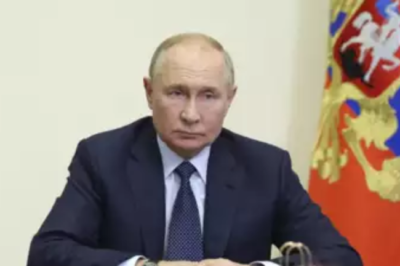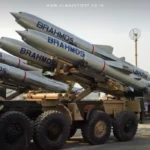
Key Developments
- Missile Test: Russia launched its experimental hypersonic missile, the Oreshnik (Hazelnut), targeting Dnipro, Ukraine.
- Distance Covered: The missile traveled over 700 kilometers from the Astrakhan region to its target.
- Impact: Officially described as hitting a military facility, the strike injured two civilians and caused significant damage to local infrastructure.
Russia’s Message
President Vladimir Putin confirmed the strike as both a test and a geopolitical statement. He emphasized the missile’s capability, hinting at potential nuclear deployment. The Kremlin spokesperson, Dmitry Peskov, underscored that this was a warning to the West following Kyiv’s use of US and UK-supplied long-range missiles earlier this week.
Warning to the West
- The Kremlin accused the US and Britain of enabling Ukraine to strike Russian territory.
- Despite no obligation, Russia informed the US about the strike 30 minutes before launch, signaling its intention to maintain controlled escalation.
Ukraine’s Response
President Volodymyr Zelenskyy condemned the attack as a “severe escalation.” Kyiv viewed the strike as a direct response to its recent use of ATACMS and Storm Shadow missiles against Russian military sites.
Military and Geopolitical Implications
- Advanced Weaponry:
- The Oreshnik marks Russia’s entry into operational hypersonic weaponry in the Ukraine war.
- Hypersonic missiles, traveling at speeds exceeding Mach 5, are challenging to detect and intercept, posing new threats to global security.
- Geopolitical Tensions:
- Moscow’s move raises the stakes, signaling its readiness to counter Western military support for Ukraine.
- It pressures Western nations to reassess their strategies, balancing support for Ukraine against the risk of wider escalation.
What’s at Stake?
The deployment of hypersonic weapons represents a turning point in the Ukraine conflict:
- For Russia: A show of strength to deter Western involvement and shift the battlefield dynamic.
- For the West: A need for unified, measured responses to avoid further escalation while maintaining support for Ukraine.
- For Global Security: Heightened concerns about the potential for direct confrontation between nuclear-armed powers.
Conclusion
The Oreshnik missile strike underscores the precarious balance in the Ukraine war. As Moscow escalates with advanced weaponry, the international community faces mounting pressure to navigate the conflict carefully. The next steps by NATO, the US, and allies will be pivotal in shaping the war’s trajectory—and its global repercussions.






































Leave a Reply